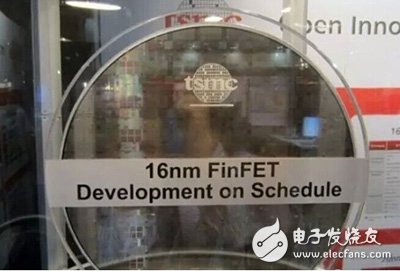Today's core language
MediaTek and China Telecom, one of the three largest telecom operators in mainland China, jointly held the first product support conference to support WCDA 2000 under the name of “Full-core, global and globalâ€, and officially introduced “MT6735†and “China’s marketâ€. The MT6753" is a quad-core and eight-core 4G 64-bit full-mode die. On the occasion of Qualcomm's monopoly investigation, MediaTek is entering the CDMA market with Qualcomm's absolute advantage at a low price. The analysis believes that MediaTek's direct purpose is to open the Chinese telecom market, which was previously dominated by Qualcomm. For more information on technology, please pay attention to the electronic core news.

First, communication news
1. Qualcomm, who was monopolized by the monopoly investigation, filed a lawsuit: MediaTek grabbed its CDMA cake. On February 6th, China Mobile's mobile phone chip leader MediaTek teamed up with China Telecom, one of the three largest telecom operators in mainland China, to jointly hold the first product conference to support WCDA 2000 under the name of “Full-core, global and globalâ€. For the mainland market, "MT6735" and "MT6753" are four-core and eight-core 4G 64-bit full-mode chips. On the occasion of Qualcomm's monopoly investigation, MediaTek is entering the CDMA market with Qualcomm's absolute advantage at a low price. The analysis believes that MediaTek's direct purpose is to open up the Chinese telecom market, which was previously dominated by Qualcomm, and to steal customers who lost confidence in Qualcomm due to antitrust cases.

Second, the sensor
1, the new sensor allows humans to feel the magnetic field: the sixth sense can help navigation. On February 6th, according to foreign media reports, we can implant this sensor into the body or wear it on the body to help us feel the magnetic field. Under the leadership of Dr. Denis Makarov, this new type of equipment was developed by researchers from the Chemnitz University of Technology (TU Chemnitz), the University of Tokyo and the University of Osaka, Leibniz Institute of Solid Materials. It is light and flexible, easy to fit on the skin, even if it is bent and folded, it will not damage its function. “These extremely thin magnetic field sensors can be used in a variety of applications, such as human skin, while providing 'new senses' for robotics, safety and medical monitoring equipment, consumer electronics and electronic skin equipment.â€
2. Fingerprint recognition or migration to the screen. According to Apple's latest patent, the Touch ID fingerprint sensor on the iPhone and iPad will be transferred to the display by the Home button, providing users with a "seamless" authentication method. The patent published by the US Patent and Trademark Office is called "Fingerprint Sensor on Electronic Devices." Specifically, this patented technology allows the device to "capture" a fixed area fingerprint on the display. For example, an iPhone lock screen state or a third-party application can "require" a user to place a finger on a specific area of ​​the display and perform scanning and identity verification.

Third, the processor
1, the new Qualcomm chipset program outflow: Xiaolong 618 and 620. Looks like Qualcomm's upcoming new chips, the Snapdragon 618 and 620, have their specifications already available, all using the big.LITTLE architecture and ARM's latest Cortex-A72 core. The Snapdragon 620 uses a quad-core Cortex-A72 with a quad-core Cortex-A53 core; the Snapdragon 618 uses a pair of A72 cores directly. They all use the new Adreno 510 GPU.
2. Nvidia also changed his mind and embraced the Samsung 14nm process. TSMC's 16nm is expected to be mass-produced by the end of 2015, and progress is slow. The 14nm FinFET cooperated by Samsung and GlobalFoundries (hereinafter referred to as GF) is very smooth. It is said that Apple has given most of the orders of the next generation A9 to Samsung. Qualcomm has also turned to the Korean giants. AMD is preparing to put GPU/ The APU is fully handed over to the GF of the family. According to South Korean media BusinessKorea, Meriton Securities analyst Park Yu-ak said in a report that Samsung will mass produce 14nm process from the second quarter of this year and supply Apple, Qualcomm and NVIDIA. That's right, I mentioned NVIDIA. We all know that NVIDIA GeForce GPUs and Tegra APs have always relied entirely on TSMC. Is it going to change in the future? There is really this possibility.

Fourth, the robot
1. After two years, the scale of China's industrial robots will rank first in the world. In the early morning of February 7, the International Robotics Federation (IFR) said on Thursday that the number of robots operating in China's production plants will exceed that of any other country by 2017, because China is automating automotive and electronics factories. upgrade. The total global robot trade has reached 9.5 billion US dollars, and if it counts related software, peripheral equipment and systems engineering, it has reached 29 billion US dollars, and China has become the largest robot market. But in terms of robot density, China still lags far behind countries with higher levels of industrialization.
2. Is the self-killing robot or is it being designed? On February 7th, Clearpath RoboTIcs was founded 6 years ago by three college friends. Husky is one of their products. It is a 4-wheel robotic vehicle for all-terrain testing and is currently serving researchers in the Department of Defense. The company also developed drones and robotic boats called Kingfisher. However, they claim that they will never design a class of products, that is: killing machines. The South Korean Dodam system is designing an automatic robotic turret called the Super aEgis II, which uses thermal imaging cameras and lasers to identify and attack targets within a 3 km range.

Five, intelligent hardware
1, Swatch pushes no need to charge smart watches, and compete with Apple. Swatch's smartwatch will support Near Field Communication (NFC)-based mobile payment services without charging. The watch will be released in two to three months, and the company's smartwatch will work with both Windows and Android devices, which will not be compatible with Apple iOS. T-Touch Expert Solar, another watch in the Tissot T-Touch series, can charge the built-in battery via solar energy. On the other hand, Swatch's Autoquartz series has a built-in miniature pendulum that automatically rotates when the wearer moves to generate electricity and store it in the built-in capacitor of the watch. Therefore, the watch can work without a conventional battery.
2, the United States to develop new mobile phone accessories can detect HIV: it takes only a few minutes. According to a report on February 6th, foreign media said that American researchers have found ways to turn ordinary smartphones into a convenient device for on-site detection of HIV and syphilis. According to Agence France-Presse, a study led by Columbia University in the United States pointed out that people can detect whether a bloody drop sample contains antibodies to a disease in a matter of minutes, without waiting for a few hours. The cost of the above tests is also much lower than the standard diagnostic test. Samuel West, an associate professor of biomedical engineering who led the research, said: "Combining microfluidic chips with new developments in consumer electronics will allow almost all smartphone users to accept lab-based Some of the diagnoses. This possibility will change the way the world provides medical services."

Sixth, smart home
1. MediaTek Creative Labs launched a new development platform. On February 5, 2015, MediaTek announced the launch of the MediaTek LinkIt Connect 7681 development platform. The platform is one of the results of MediaTek Labs' global program, which is based on the MediaTek MT7681 Wi-Fi System Single-Chip Solution (SoC), which provides developers and manufacturers with the tools they need. Announced the main link to the Internet of Things platform LinkIt Connect "MT7681" for developers to develop Wi-Fi-enabled IoT devices that can be controlled via smart phones or networks, remote control of home light bulbs or sockets, or through home automation The website controls the heaters in the home.

Line Array Speakers,Linear Array Loudspeakers,Active Linear Array Sound Bar,Sound Linear Array Loudspeakers
The ASI Audio Technology Co., Ltd , https://www.asi-sound.com